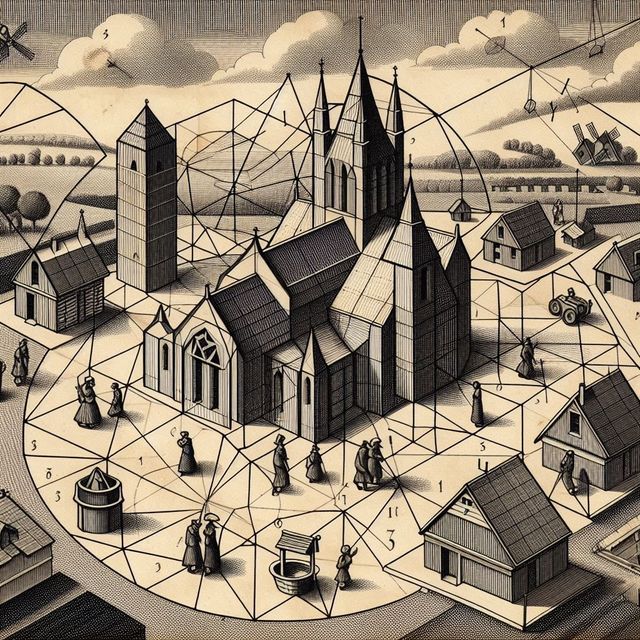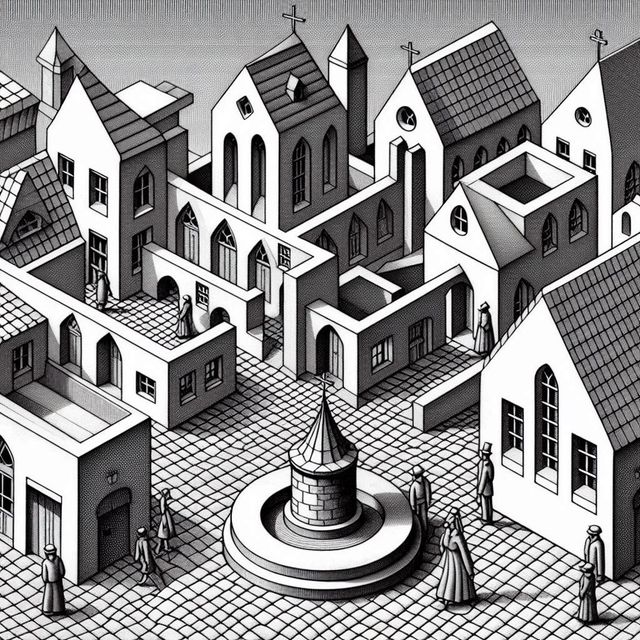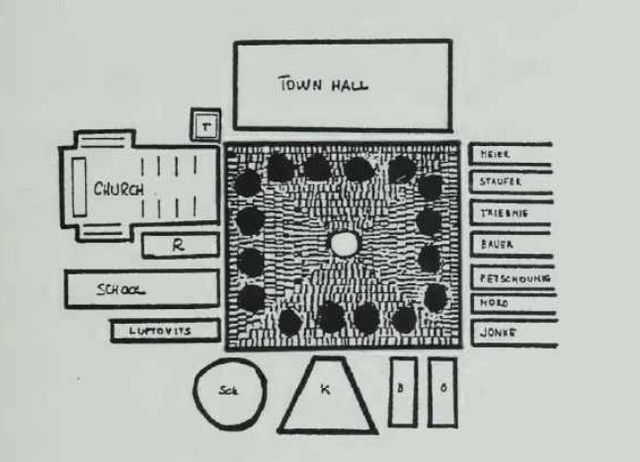-
Vijay Fafat
- Published on
An odd but charming book which describes a dreamy, strange, very static, grey world nestled in some corner of thought. In measured, clipped tones, the narrator describes the mathematically precise contours of the geometric village, with its Village Square, its by-lanes, its bridge, the bridge keeper, the artist and his pyramidal tent, the blacksmith and his house, the regimented routines of the village officials, the sleeping positions of people, the door frames and door styles, the trees, the irrigation system, dairy farming, folk songs, etc etc. Geometric drawings supplement the descriptions in various places.
However, unlike “Flatland” or “Planiverse”, this is really not a mathematical novel, as such, beyond the geometric mood it sets. It is intended as a very subtle satire. As the back cover of the book describes it:
“[The book is] An innovative satire on the process by which bureaucracy and official regimentation insidiously pervade society. In a dead-pan, pseudo-scientific tone, the nameless narrator takes us on a tour of a bizarre village whose inhabitants lead such habitual, regulated lives that they resemble elements in a mathematical equation.”
The Publisher’s Weekly review describes it as follows:
“The traditional regional novel celebrating simple rural living is gleefully subverted in this experimental fiction [..] Alternating mathematically precise descriptions with dreamlike interludes, the author evokes a stultifying village where a schoolteacher obsesses over petty rules while the ineffectual mayor enacts meaningless public rituals. Instead of taking their place in a linear plot, daily events, such as a tightrope walker’s performance in the village square, are refracted through multiple points of view, concrete verse and associative word clusters. Alleging that “black men” are hiding in the shadows of trees, the town authorities begin to monitor all citizens’ activities; permission to take a walk in the woods requires submission of a six-page form in duplicate. Ordinances, pat aphorisms and pseudo-informative diagrams pervade the narrative, testifying to the onslaught of bureaucracy. Meanwhile, a flock of violent birds periodically destroys villagers’ houses, perhaps symbolizing nature’s revolt against a fossilized social order. Leavened with irreverent humor, this Kafka-esque fun house of a novel raucously protests the regimentation and standardization of modern life.”


